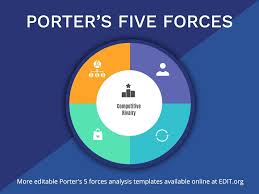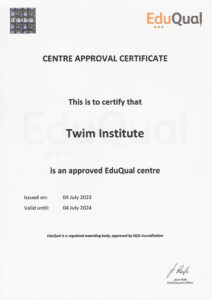
Porter’s Five Forces Model is a framework for analyzing the competitive environment of a particular industry or market.
It was developed by Michael Porter, a professor at Harvard Business School, and it is widely used by businesses and analysts to understand the dynamics of an industry and to identify opportunities and threats.
The model identifies five key forces that shape the competitive landscape of an industry. They are:
The Threat of New Entrants
One of the five forces in this model is the threat of new entrants, which refers to the likelihood of new competitors entering the market and disrupting the existing competitive landscape.
The threat of new entrants is influenced by several factors, including:
Barriers to entry: These are obstacles that make it difficult for new competitors to enter the market. Examples include high startup costs, government regulations, and strong brand loyalty among existing customers.
Economies of scale: This refers to the cost advantage that existing companies have over new entrants due to their ability to produce goods or services at a lower cost per unit.
Access to distribution channels: Established companies may have exclusive contracts with suppliers or distributors, making it difficult for new entrants to gain access to the same channels.
Switching costs: These are the costs that customers incur when switching from one product or service to another. High switching costs can make it difficult for new competitors to attract customers.
Brand loyalty: Established companies may have strong brand recognition and customer loyalty, making it difficult for new entrants to establish a foothold in the market.
Bargaining Power of Suppliers
The bargaining power of suppliers refers to the ability of suppliers to influence the price and quality of goods and services they provide to companies in the industry. This can be affected by factors such as the number of suppliers available, the uniqueness of the product or service, the cost of switching to an alternative supplier, and the availability of substitute inputs.
If there are few suppliers in an industry and they offer unique products or services, they will have greater bargaining power. This allows them to charge higher prices or offer lower-quality products, which can negatively impact the profitability of companies in the industry. Additionally, if there are high switching costs or a limited supply of substitute inputs, suppliers may have even more power.
On the other hand, if many suppliers are offering similar products or services, the bargaining power of suppliers will be lower. This is because companies have more options and can easily switch to a different supplier if they are not satisfied with the price or quality of the products or services.
Bargaining Power of Buyers
The bargaining power of buyers is another key factor in Porter’s five forces model that influences the competitive environment of an industry. It refers to the ability of buyers to negotiate lower prices or better terms for the goods or services they purchase from companies in the industry.
Buyers’ bargaining power is influenced by several factors, including the number of buyers in the market, the size and concentration of buyers, and the availability of substitute products or services.
If there are few buyers in the market, or if a few large buyers dominate the market, they will have greater bargaining power. This is because their purchasing decisions can have a significant impact on the profitability of companies in the industry, and they may be able to negotiate lower prices or better terms as a result.
Additionally, if there are many substitute products or services available, buyers will have more options and may be able to negotiate more favorable terms from companies in the industry.
Threat of Substitutes
The threat of substitutes refers to the availability of alternative products or services that can fulfill the same customer needs.
The threat of substitutes can impact the profitability of firms in an industry, as customers may choose to switch to a substitute product or service if it offers a better value proposition. This can reduce demand and pricing power for firms in the industry.
Some do the factors that increase the threat of substitutes include:
Price-performance trade-offs, availability and ease of switching, brand loyalty and switching costs, product differentiation, and cross-price elasticity.
Overall, the threat of substitutes is an important factor to consider when analyzing the competitive dynamics of an industry, as it can impact the profitability and strategic choices of firms operating within it.
Rivalry among Existing Competitors
Rivalry among existing competitors is one of the five forces in Porter’s Five Forces model, which is a framework used to analyze the competitive dynamics of an industry. Rivalry refers to the intensity of competition between existing firms in an industry, which can impact the profitability and strategic choices of those firms.
Overall, the intensity of rivalry among existing competitors can have a significant impact on the profitability and strategic choices of firms in an industry. Understanding this force is important for firms to develop effective competitive strategies and respond to changes in the industry.
Conclusion
In conclusion, the five Porter’s forces models provide a comprehensive framework for analyzing the competitive landscape of any industry.
By understanding the bargaining power of suppliers and buyers, the threat of new entrants and substitutes, and the intensity of rivalry among existing competitors, businesses can make informed decisions and develop strategies to gain a competitive advantage.
By analyzing each of these forces, businesses can gain insights into the level of competition and profitability of an industry and can develop strategies to better compete and succeed in the marketplace.
For more information about Business Analysis and all it entails, you can check out our posts on the official Twim Institute website. Also, our Business Analysis cohort for the new batch has started in earnest. For more inquiries, call/chat at +2349033279205.




